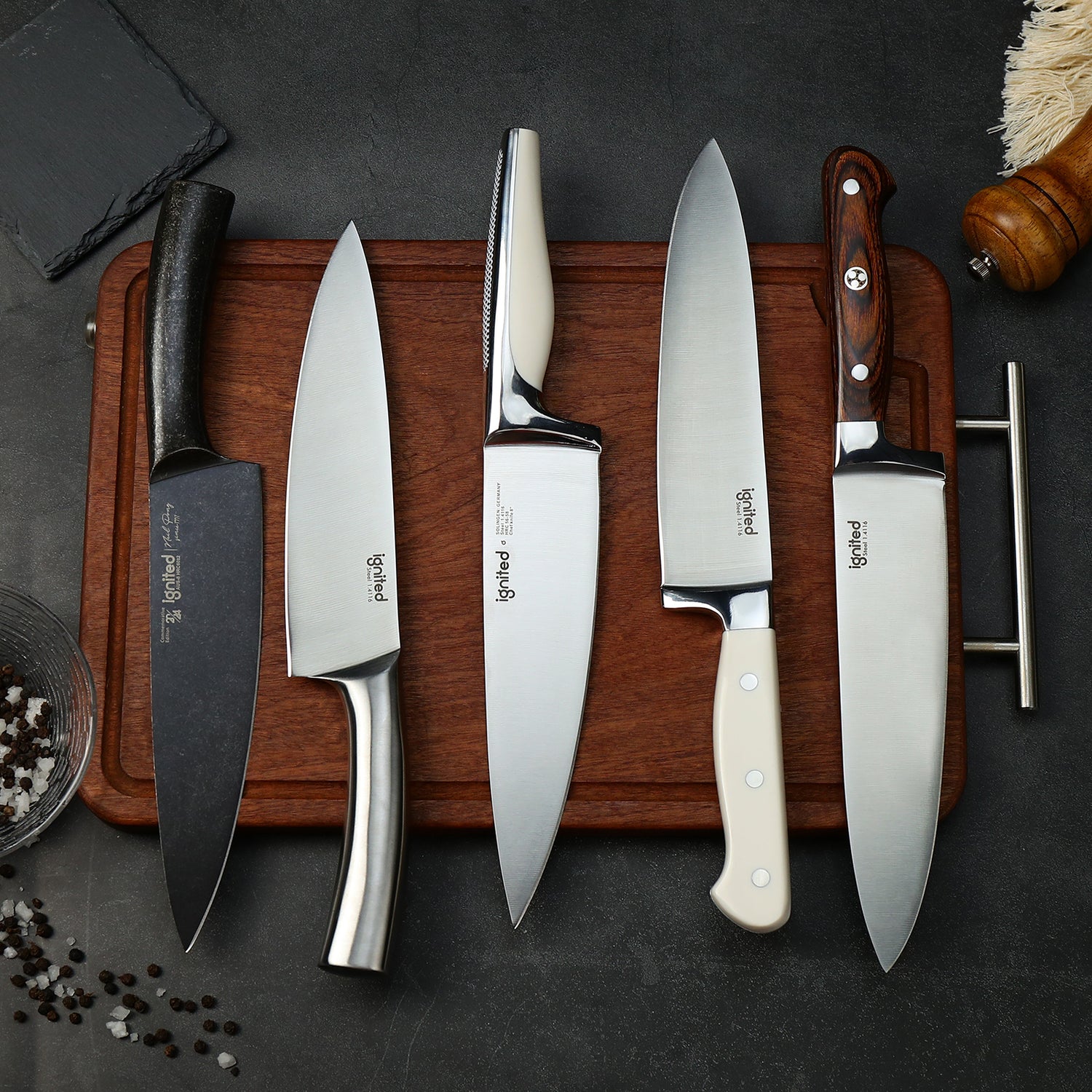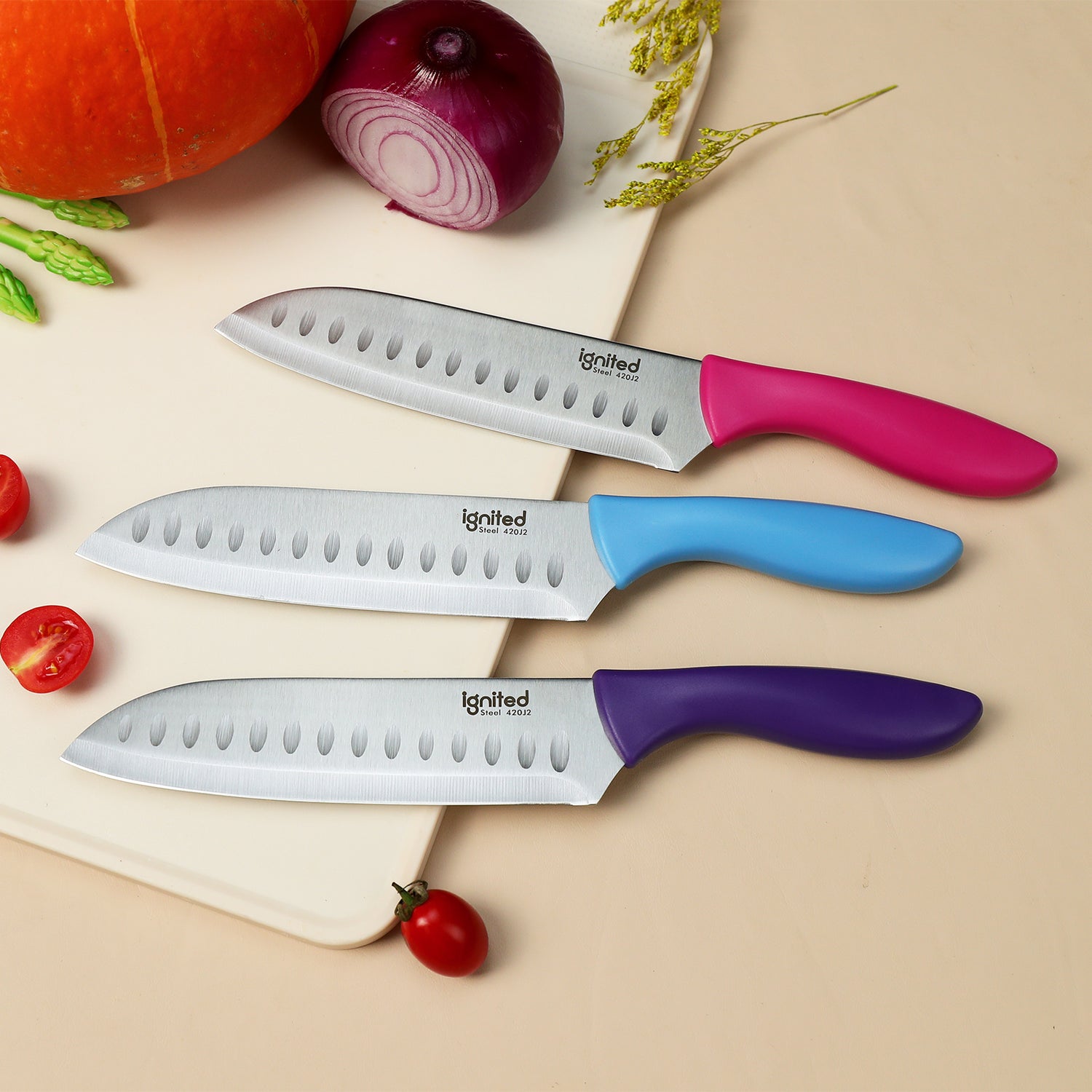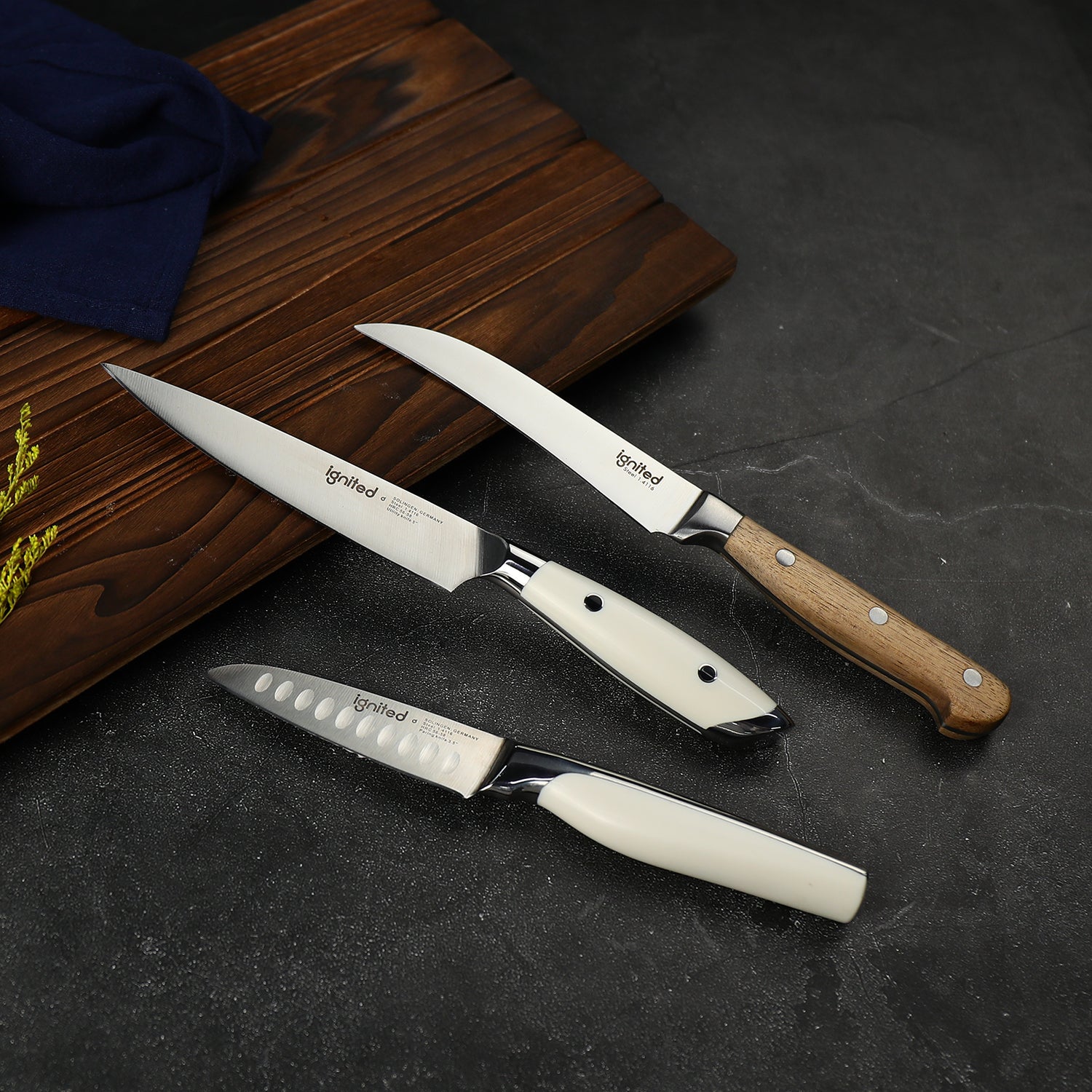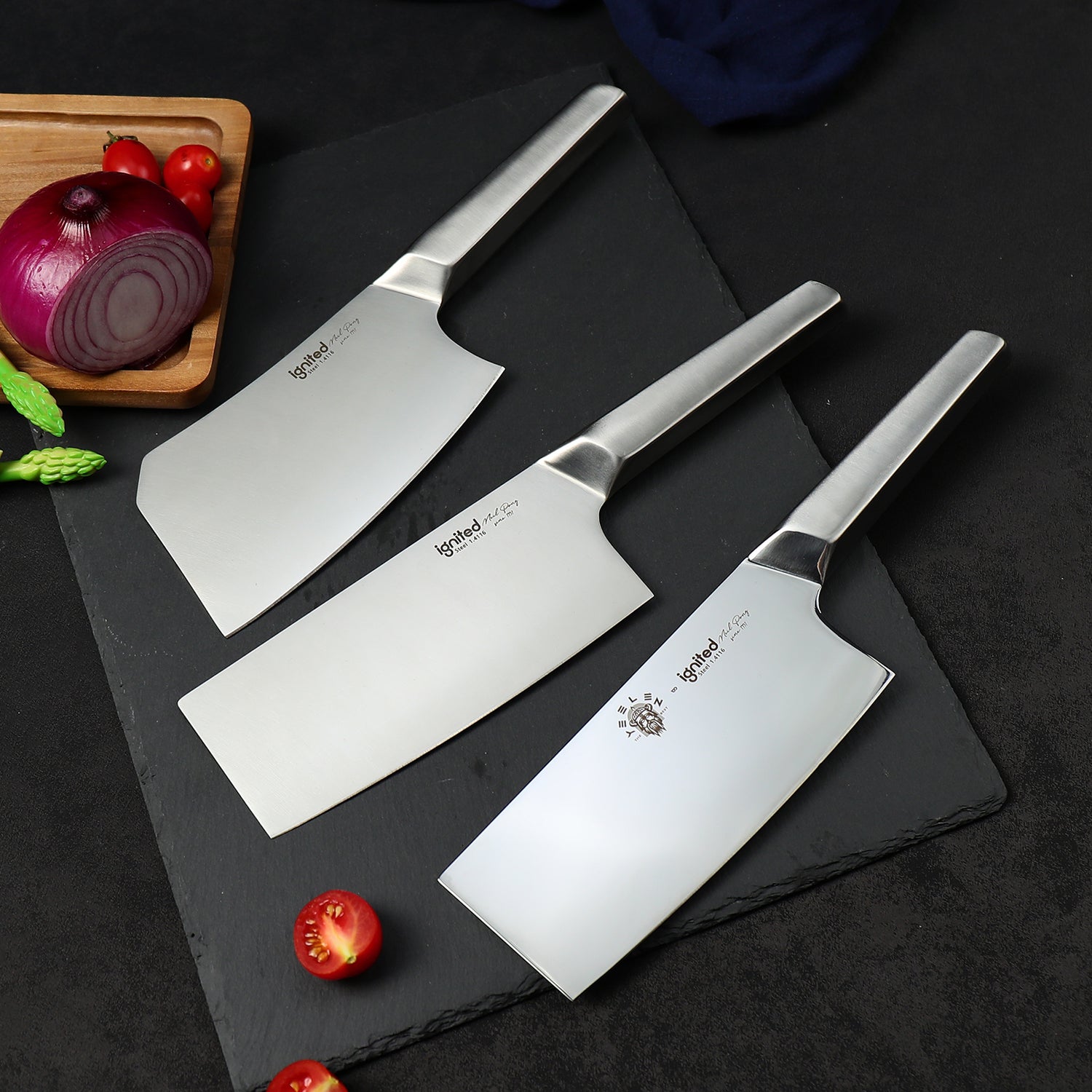How to Choose a Cutting Board for Different Types of Food
Understanding Cutting Boards
Cutting boards protect counters, protect knife edges and help maintain food safety. Different materials bring trade-offs: knife-friendliness, ease of sanitation, durability, appearance and environmental footprint. The right board depends on what you cut most and how you clean and store it.
Types of Cutting Boards
Wooden Cutting Boards
Pros: Gentle on knives, attractive, often naturally antimicrobial (hardwoods like maple, walnut, beech).
Cons: Require hand-washing, regular oiling, can warp or crack if misused.
Best for general prep and presentation.
Plastic Cutting Boards
Pros: Lightweight, inexpensive, dishwasher-safe (many types), easy to color-code for tasks.
Cons: Deep grooves trap bacteria; replace when heavily scored.
Great for raw meat and quick sanitization.
Glass Cutting Boards
Pros: Non-porous, easy to clean, stain- and odor-resistant.
Cons: Dull knives fast, slippery surface, risk of chipping or breaking.
Better for serving/cheese boards than heavy cutting.
Bamboo Cutting Boards
Pros: Renewable, harder than many hardwoods, attractive grain.
Cons: Can be brittle if cheap laminated construction is used; needs regular oiling and hand-washing.
Good eco-friendly option when maintained properly.
Composite Cutting Boards
Pros: Engineered from wood fibers + resin or compressed polymers — knife-friendly, durable, heat resistant and non-porous.
Cons: Can be pricier; look less "natural" than wood.
A solid all-round choice for both hygiene and edge care.
Choosing the Right Cutting Board for Different Foods
Raw Meat
Recommended: Plastic or non-porous composite.
Why: Easier to sanitize, dishwasher-safe options available, less risk of trapped bacteria in deep cuts. Use a clearly labeled or color-coded board and sanitize after each use (hot soapy wash + sanitizing rinse).
Vegetables and Fruits
Recommended: Hardwood (maple, walnut), bamboo, or composite.
Why: Gentle on knives; wooden surfaces are forgiving for repeated chopping. For juicy items, choose boards with juice grooves or use a separate small plastic board for messy produce.
Cooked Meats
Recommended: Wood or composite.
Why: Wooden boards present and slice well; composite boards are easy to clean. Ensure boards used for cooked meats were not previously used for raw meat unless fully sanitized.
Dairy Products (Cheese)
Recommended: Wood or dedicated cheese board (often hardwood).
Why: Wood enhances presentation and handles soft cheeses without causing excessive sticking. Keep separate from raw-protein boards to avoid flavor transfer.
Bakery Items (Bread, Pastries)
Recommended: Wood or plastic.
Why: Wood is great for slicing bread and kneading dough; plastic is convenient for sticky tasks and easy cleanup.
Allergen-Free Preparation
Recommended: Dedicated plastic board (color-coded) or clearly labeled zone.
Why: Plastic boards are easy to disinfect completely — use separate boards and utensils when preparing allergen-free meals to avoid cross-contact.
| Food Type | Best Board | Why |
|---|---|---|
| Raw meat | Plastic / Composite | Sanitizes easily; replace when scored |
| Vegetables & fruits | Wood / Bamboo / Composite | Gentle on blades; good presentation |
| Cooked meats | Wood / Composite | Nice slicing surface; hygienic when clean |
| Dairy (cheese) | Wood / Cheese board | Presentation + appropriate moisture handling |
| Bread & pastries | Wood / Plastic | Stable surface for slicing or proofing |
| Allergen-free prep | Dedicated plastic board | Easy, reliable sanitization |
Maintenance and Care of Cutting Boards
Cleaning
Plastic & composite: dishwasher-safe in many cases — otherwise hot, soapy water. Wooden & bamboo: hand-wash with warm water and mild soap; never soak. Rinse, towel dry and air-dry upright.
Oiling
Wood and bamboo benefit from regular oiling with food-grade mineral oil or board balm (oil + beeswax). Oil when water no longer beads on the surface or every few weeks with frequent use.
Sanitizing
For raw meat boards: after cleaning, sanitize with a mild bleach solution (1 tbsp bleach per gallon of water) or 1:1 white vinegar/water, rinse and dry. Baking soda is effective for odors.
Storage
Store boards upright in a rack for airflow. Avoid stacking wet boards. Keep away from direct heat (oven, stove) to prevent warping.
Frequently Asked Questions
1. What is the best material for a cutting board?
There is no single “best” — choose plastic/composite for raw meat and sanitation, wood/bamboo for general prep and knife care, and avoid glass for cutting. Best practice: use more than one board for different tasks.
2. How often should I replace my cutting board?
Replace when deep grooves, cracks, delamination or persistent odors appear. Plastic boards often need replacement sooner if heavily scored; well-cared-for hardwood boards can last many years.
3. Can I use the same cutting board for meat and vegetables?
It’s safest to use separate boards or color-code. If you must use the same board, clean and sanitize thoroughly between uses to avoid cross-contamination.
4. How do I properly clean and maintain a wooden cutting board?
Hand-wash, dry immediately, sand out shallow gouges if needed, and season regularly with food-grade mineral oil or board balm. Never put in the dishwasher.
5. Are glass cutting boards safe to use?
Glass is hygienic but not knife-friendly; it will dull edges quickly and can break. Use glass for serving or as a secondary surface rather than for everyday chopping.
Conclusion
Choosing the right cutting board improves food safety, protects your knives, and makes prep more efficient. Our practical rule: separate raw proteins from produce, pick plastic/composite for sanitization tasks, and choose wood or bamboo for everyday chopping and presentation. Combine the right boards with proper cleaning, regular maintenance and clear labeling to keep your kitchen safe and efficient.





